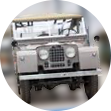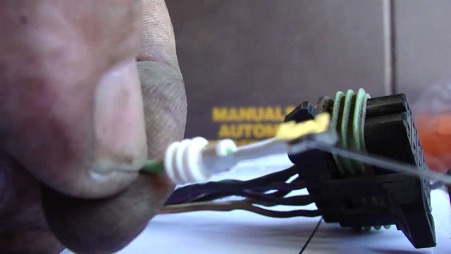
Fun Rover
January 1, 2021
Search
Popular Articles
8 Almost Useless Land Rover Mods
11th June 2014
Updated: What Makes a Defender Iconic?
29th November 2011

If there is any industry that has been becoming further advanced in technology none-stop, it is that of Automotive. With highly standardized and advanced technological innovations from the creating, to the production lines and auto-sale car shops, the majority of the processes have been leaning more towards using automatic practices.
Trends such as this help save many manufacturing companies from going under during harsh economic times such as that of COVID-19 when human labor becomes scarce due to people having to work from home, or getting ill. When automation is placed into industries, it has an assortment of benefits to the companies and the economy.
Starting just with the concept of productivity reaching its peak, some of these include better quality products, better turnaround times and factory lead times, shorter working weeks for laborers, and more which can be found on this website. Amongst all the tools used in this advent, one of the newer and more innovative ones is the automotive electrical connectors. But what are they? This article will touch on this subject to clarify what it is and how it is used for those who are unaware of them.
So, let’s dive right in.
Automotive Electrical Connectors
These are designed specifically for vehicles of all kinds, from cars, buses, trucks, tractors, and more. They are part of the electrical system of a vehicle and are made up of microprocessors and various wires.
Think of them as a network of different wire connections coming and going from various components inside a car to the other, and both big and small, much like how the processor of a computer works. They can be placed into 4 types of categories namely:

Group A – these are the power connectors. They are attached to the vehicle's head units and these allow it to do a few things such as powering up the car, the switches antennas, and volume controls of the radio.
Group B – These connectors are used to connect the speakers to the vehicle.
Group C – Those who are keen on adding additional gear to their cars such as an amplifier or CD deck or use remote control for their radio, can make use of these surplus wires which are available for this reason.
Group D – If your car has a GPS or satellite navigation system, it would use this category of connectors to operate it.
As defined by the ISO standard 10487, these above 4 categories list out the performance requirements for any type of vehicles and can be found here: https://www.iso.org/standard/21094.html
How the Automotive Electrical Connectors Work
The simplest answer to how they work is by transmitting electrical currents from one component to the other. Any vehicle has what’s called a ‘transmission’, this is the biggest part you can find of the car or truck, and makes up the ‘skeleton’. Without it, it would just be a shell and have no power or ability to move or work.
The things included in this transmission are the wires, connectors, uses, and battery devices, located in specific areas, and all of them are connected through a means of communication called the automotive electrical connectors. This ‘system’ allows all the multiple wires to do their part meticulously, almost like a maze, and help make sure they perform their individual ‘duties’ in the best way possible and avoid any short-circuiting from happening.
When power is distributed to all the components of a vehicle such as the sensors, window wipers, radio, indicators, ignition, relays, and more, sometimes it can be through a single connector, while other times it would take multiple ones to do the job. It is part of the critical manufacturing process of any automotive vehicle, and without it, you would not be able to get from point A to point B.
A lot of this warrant’s customization at the factories, but also can be done as part of individual buyer’s requests. The connectors themselves also come in a range of different ones depending on the make, model, and size of the vehicles. From simple insulated connectors to seamless and non-insulated ones. they are also created to be waterproof for marine use.
We hope the above information has helped you learn more about the car or bus that drives daily and the one important aspect of it that has been keeping it going.
About Us
FunRover is a place for Land Rover enthusiasts to gather as a community and discuss the best 4x4 vehicles ever produced. We're building a library of high quality resources & articles to help owners along in their Land Rover ownership.
Popular Posts
8 Almost Useless Land Rover Mods
11th June 2014
Updated: What Makes a Defender Iconic?
29th November 2011
How to Plastidip your Land Rover Defender
19th August 2014





